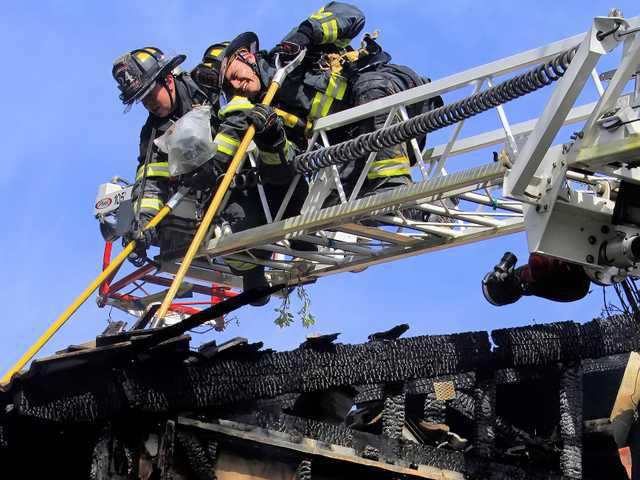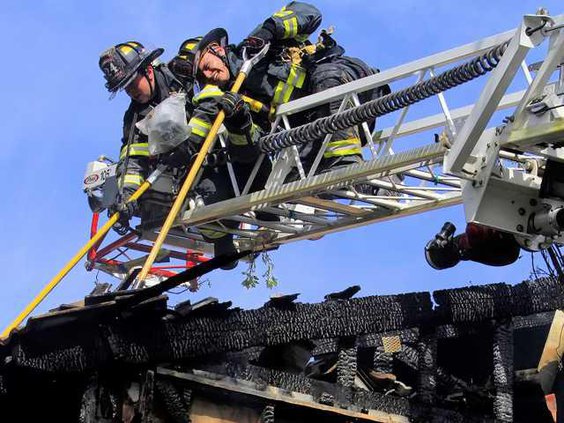Upwards of 2,000 homes in southeast Manteca are outside the targeted five-minute response time needed for the best outcomes in fire and medical emergencies
Manteca Fire Chief Kyle Shipherd told Manteca Rotarians Thursday that underscores the need for a fifth fire station. He added that only one of the city’s four fire stations are south of the railroad tracks despite that’s where the bulk of Manteca’s growth is taking place.
That fifth station to be built at the corner of Woodward Avenue and Atherton Drive will help guarantee a speedy response especially in cases where responding fire engines are blocked by a freight train on the Union Pacific tracks that cut through the heart of the community. The city has funded a 30 percent design plan for the station.
The area of the city to the southeast, now difficult to reach, is similar to the response issues that existed in the northwest area around Del Webb before Station 4 was built in 2013. The existing stations are located on South Powers Avenue, South Union Road near the 120 Bypass, Louise Avenue, west of Main Street at Crestwood and on Lathrop Road west of Union Road near the Del Webb community.
Chief Shipherd said the community has more than doubled in size since 1980 to 76,000 residents. That has resulted in a demand for more fire protection and medical responses. Ambulances are sometimes unavailable due to transports of patients to locations outside of the city including Modesto and the Bay Area. When ambulance response is “drawn down” because of those calls, other ambulances are dispatched from areas outside the city with fire units being the lone first responders. Mutual aid ambulances can take as long as 15 minutes to reach a critical scene, the chief noted.
Shipherd added that up until recently, most of the city’s growth had taken place in the northern part of the city, with the railroad being less of a problem. But growth is now building up with additional neighborhoods to the south and current response times are running from six to nine minutes at the extreme south side of Manteca.
He explained that the County Emergency Services Department is responsible as to how fire departments respond or don’t respond to medical calls, having a list of approved calls for both ambulance and fire engines. Manteca now has a plan where fire engines also respond to medical calls, he said.
“Manteca wanted and paid for faster response times,” Shipherd said, with the passage of Measure M. “This is the only county in the state I know where fire departments were not being sent to medical calls.”
Battalion Chief David Marques added that such a restriction would hypothetically prohibit fire fighters at the Powers Avenue station, for example, from responding to an emergency of a dislocated shoulder in the Lincoln Park swimming pool across the street from the station – having to wait for an ambulance to arrive instead from as far away as Stockton or Tracy – instead of firefighters walking across the street.
Shipherd said his department starts every day with 14 firefighters assigned to three of its stations and five to the fire station on Union Road at the 120 Bypass. The additional two firefighters are needed to man the rescue squad for use on the freeway for accident coverage. There have been 150 collisions on the bypass in the past six months with five fatalities. The department responding to 7,000 calls a year – mostly medical and service calls with only about 10 percent actual fire calls.
“Fires double in size every five minutes and brain death begins in five minutes following a heart attack,” he said. That makes it critical to have a five-minute response time all over the city to a call for help. All firefighters have a minimum of an Emergency Medical Technician (EMT) certification and are often the first on the scene.
“All freeway cell phone calls for service are a blessing and a curse,” the chief said.
The calling motorists remember the last sign they passed and often report that as the location of the crash making it difficult for first responders to locate the wreck.
“We send engines from both directions on the freeway to determine the exact location,” Shipherd said. “We usually need two engines, a fire chief and two ambulances. We have had every engine in the city respond in the past to a Highway 120 crash where many vehicles are involved.”
In answer to a question from a Rotarian on the need to send an engine on a medical call where two firefighters in a pickup truck might be able to handle the emergency, Shipherd explained that should another urgent fire call be dispatched, those men would have to drive back to the station to get an engine, using valuable time with a delay that could be as much as 15 minutes.
The department currently has 28 reserve firefighter positions with 15 of them filled. A reserve firefighter must also go through a fire academy and be certified and work his position for at least one 24 hour shift a month.
To contact Glenn Kahl, email gkahl@mantecabulletin.com.
LONGER TIMES FOR HELP
2,000 households in southeast outside 5 minute response time





